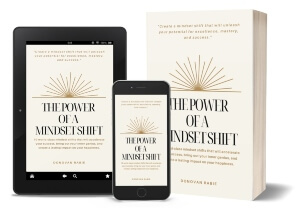In today’s fast-paced and stressful world, mental health has become an increasingly important topic of discussion. Alongside this, creativity has also gained recognition for its positive impact on overall well-being. This article aims to explore the connection between creativity and mental health, shedding light on how engaging in creative pursuits can promote mental well-being and offer a holistic approach to self-care.
In This Article
ToggleThe Power of Creativity
Understanding Creativity
Creativity encompasses a wide range of activities and expressions, including art, music, writing, dance, and more. It is a form of self-expression that allows individuals to tap into their imagination, think outside the box, and generate unique ideas. Engaging in creative endeavors provides an outlet for emotions, thoughts, and experiences, offering a therapeutic release.
10 world-class mindset shifts that will…
~ Accelerate your success.
~ Bring out your inner genius.
~ Create a lasting impact on your happiness.
Price From: $5.18
Stress Relief and Emotional Outlet
Creativity acts as a powerful stress relief tool, allowing individuals to channel their emotions and thoughts into a constructive outlet. Whether it’s painting, playing an instrument, or writing poetry, these activities offer a means of expression and can help individuals process and cope with their feelings. By engaging in creative activities, individuals often experience a sense of relief and a reduction in stress levels.
Boosting Self-Confidence and Self-Esteem
Creating something unique and meaningful fosters a sense of accomplishment and boosts self-confidence. When individuals successfully complete a creative project, they gain a sense of pride in their abilities and talents. This, in turn, contributes to improved self-esteem and a positive self-image. Engaging in creative pursuits encourages individuals to embrace their uniqueness and express themselves authentically.
Creativity as a Tool for Mental Well-being
Enhancing Problem-Solving Skills
Engaging in creative activities stimulates the brain and enhances cognitive abilities, including problem-solving skills. Creative thinking involves approaching challenges from different angles, thinking critically, and finding innovative solutions. This mental flexibility and adaptability gained through creativity can also be applied to real-life situations, improving overall problem-solving abilities and reducing feelings of being overwhelmed.
Fostering Mindfulness and Flow State
When engrossed in a creative activity, individuals often enter a state of flow, also known as “being in the zone.” Flow refers to a state of complete immersion and focus on the task at hand, where time seems to fly by. This state of flow is similar to mindfulness, as it encourages individuals to be fully present in the moment and let go of external stressors. Engaging in creative pursuits can provide a break from daily pressures and promote a sense of calm and tranquility.
Encouraging Self-Reflection and Personal Growth
Creativity invites individuals to explore their inner thoughts, emotions, and experiences. Through creative expression, individuals gain insights into themselves and their unique perspectives on the world. This self-reflection promotes personal growth and a deeper understanding of one’s own identity and values. Creative activities can be a form of self-discovery, allowing individuals to uncover hidden talents, aspirations, and passions.
Seeking Balance and Support
Incorporating Creativity into Daily Life
To reap the benefits of creativity for mental health, it is important to incorporate creative activities into daily life. This can be as simple as setting aside time for drawing, writing in a journal, or engaging in a hobby. Making creativity a priority helps individuals maintain a balanced lifestyle and promotes overall well-being.
Exploring Art Therapy and Creative Interventions
For individuals facing mental health challenges, art therapy and other creative interventions can provide valuable support. Art therapy is a form of psychotherapy that utilizes the creative process to explore emotions, reduce anxiety, and promote healing. Participating in art therapy sessions, guided by trained professionals, can offer individuals a safe space for self-expression and emotional growth.
Conclusion
The connection between creativity and mental health is a powerful one. Engaging in creative activities has the potential to positively impact overall well-being, providing stress relief, boosting self-confidence, enhancing problem-solving skills, and fostering self-reflection. By incorporating creativity into daily life and exploring avenues like art therapy, individuals can take proactive steps towards maintaining their mental health. Embracing creativity allows individuals to tap into their inner resources, find solace in self-expression, and embark on a fulfilling journey of self-discovery.
Remember, to experience the full benefits of creativity, it’s essential to prioritize self-care and allocate time for creative endeavors. By doing so, you can harness the transformative power of creativity and unlock a world of mental well-being.






